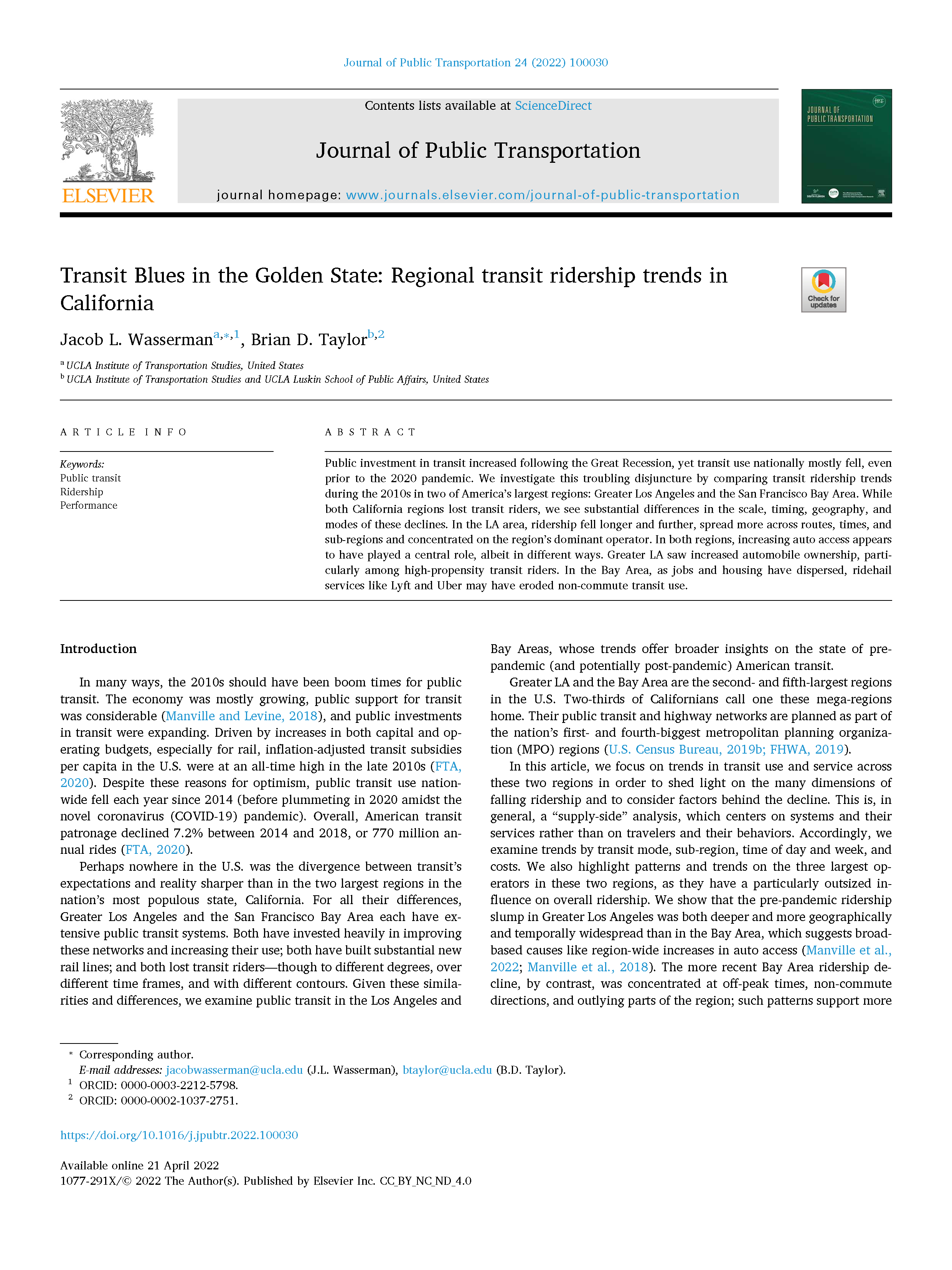Date: December 7, 2022
Author(s): Jacob L. Wasserman, Brian D. Taylor
Abstract
Public investment in transit increased following the Great Recession, yet transit use nationally mostly fell, even prior to the 2020 pandemic. We investigate this troubling disjuncture by comparing transit ridership trends during the 2010s in two of America’s largest regions: Greater Los Angeles and the San Francisco Bay Area. While both California regions lost transit riders, we see substantial differences in the scale, timing, geography, and modes of these declines. In the LA area, ridership fell longer and further, spread more across routes, times, and sub-regions and concentrated on the region’s dominant operator. In both regions, increasing auto access appears to have played a central role, albeit in different ways. Greater LA saw increased automobile ownership, particularly among high-propensity transit riders. In the Bay Area, as jobs and housing have dispersed, ridehail services like Lyft and Uber may have eroded non-commute transit use.
About the Project
From 2014 to 2018, California lost more than 165 million annual boardings, a drop of over 11%. This project examines public transit in California in the 2010s and the factors behind its falling ridership. Transit ridership has been on a longer-term decline in regions like Greater Los Angeles and on buses, while ridership losses in the Bay Area are more recent. While overall transit boardings across the state are down since 2014, worrisome underlying trends date back earlier as patronage failed to keep up with population growth. But reduced transit service is not responsible for ridership losses, as falling transit ridership occurred at the same time as operators instead increased their levels of transit service. What factors help to explain losses in transit ridership? Increased access to automobiles explains much, if not most, of declining transit use. Private vehicle access has increased significantly in California and, outside of the Bay Area, is likely the biggest single cause of falling transit ridership. Additionally, new ride-hail services such as Lyft and Uber allow travelers to purchase automobility one trip at a time and likely serve as a substitute for at least some transit trips. Finally, neighborhoods are changing in ways that do not bode well for public transit. Households are increasingly locating in outlying areas where they experience longer commutes and less transit access to employment. At the same time, a smaller share of high-propensity transit users now live in the state’s most transit-friendly neighborhoods.


